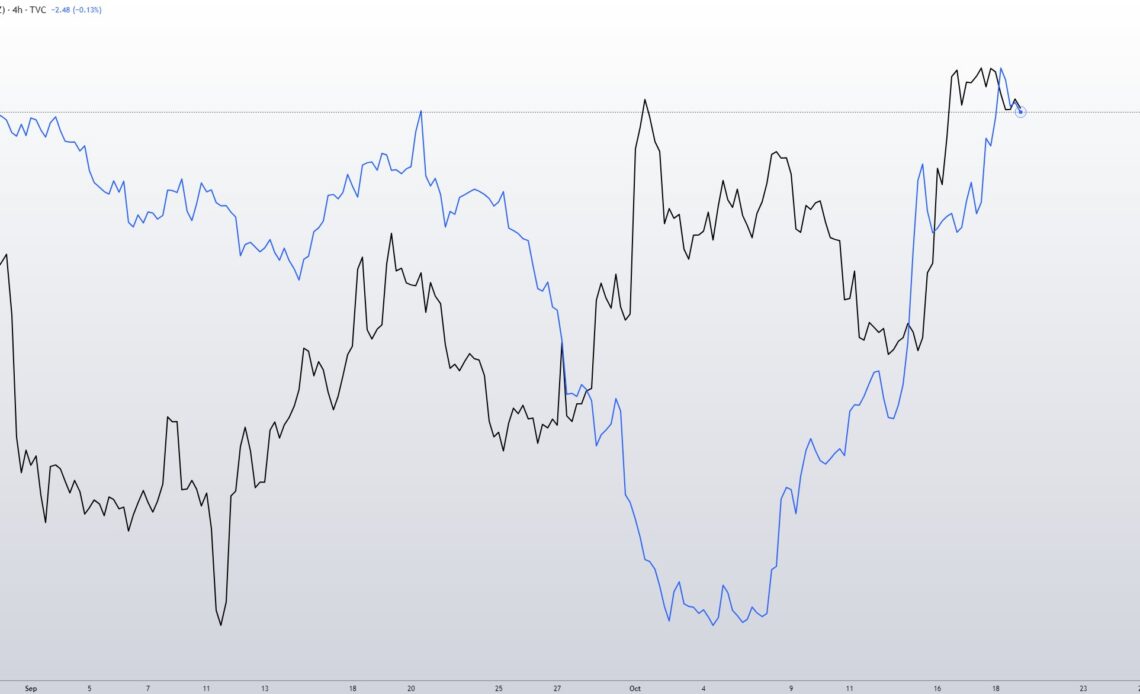Following recent geopolitical events, the correlation between gold and Bitcoin prices has once again come under scrutiny by market analysts. Here’s a comprehensive dive into the relationship and its implications.
The Gold And Bitcoin Correlation
After the recent Israel-Hamas war, gold experienced a rapid uptick in its price. This shift interestingly mirrored movements in the Bitcoin market, emphasizing a revived correlation between the two assets. Skew, a reputable market analyst, shared his insights on X (formerly Twitter), noting on October 11 that “correlation has been rather loosely applicable to BTC periods of 35 days + where there’s price disconnection between both markets.”
However, only days later, on October 16, he observed a potential “re-correlation” as both Bitcoin followed the latest gold rally. Today, the statement stands stronger with Skew’s latest tweet, “BTC & gold correlation still there it seems. Gold may lead the next big move for BTC.”
In his recent insights shared in the Onramp Weekly Roundup, Bitcoin analyst Dylan LeClair emphasized the implications of the ongoing selloff in government bonds. Rising costs for long-term financing directly influence the global cost of capital, offering a valuation yardstick for various assets.
More significantly, the treasury market underpins the global financial ecosystem. Its current instability could pressure asset prices and exacerbate the pre-existing debt cycle, potentially endangering the US’s fiscal position. This precarious state contrasts sharply with the US administration’s fiscal actions, as evidenced by plans like the “WHITE HOUSE EYES $100 BILLION UKRAINE, ISRAEL AND BORDER ASK”, suggesting a lack of fiscal restraint, according to LeClair.
Gold, Real Yields, And The Changing Landscape
Further complicating matters, Bill Dudley, former president of the Federal Reserve Bank of New York, in his recent Bloomberg piece, noted the likelihood of the current cycle of quantitative tightening (QT) persisting until late 2025. This prolonged QT could heighten long-term interest rates and risk treasury market turbulence. Yet, should severe dysfunction manifest in the treasury market, the Federal Reserve might reconsider its QT trajectory.
Interestingly, post the Russia-Ukraine conflict and the subsequent confiscation of Russia’s G7 reserves, gold, and real yields have shown an atypical…
Click Here to Read the Full Original Article at NewsBTC…
























